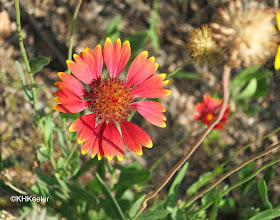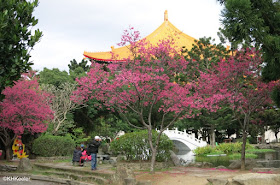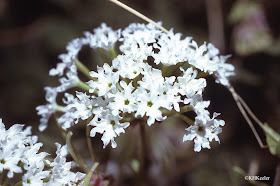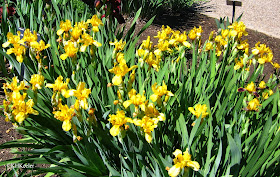Blanketflower, Gaillardia, is a native you probably know as a garden flower. Native garden flowers are not all that common.
Recently, talking and writing about garden flowers, I looked at the origins of common garden flowers and noticed that only a few of them are native to central North America. The simplest explanation is time. Europeans first encountered these American plants in the early 1800s, so that's the earliest that they might have been considered for European-style flower gardens. In contrast, many European and Asian plants have been grown in gardens for 2,000 years. The consequences of long periods in cultivation include familiarity--how often do we favor the plants we grew up with? In addition, cultivation changes plants to make them more attractive in gardens, creating multiple colors, multiple sizes (for example, dwarf varieties), doubled flowers, high and predictable seed germination, good survival of transplanted cuttings. It reduces undesirable characteristics such as spines and aggressive spreading. Roses, lilies, most iris, crocuses, peonies, dahlias, daffodils and narcissus, tulips, and lilacs--to name a few--are all from Eurasia.




